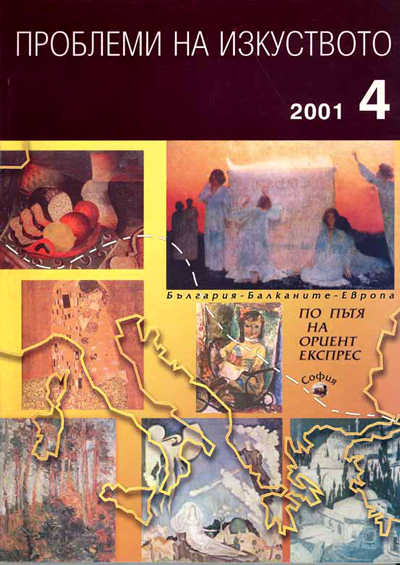Бележки за българското художествено присъствие в Германия между двете световни войни
Notes about Bulgarian Artistic Presence in Germany between The Two World Wars
Author(s): Dentitsa DanchevaSubject(s): History, Fine Arts / Performing Arts, Cultural history, Visual Arts
Published by: Институт за изследване на изкуствата, Българска академия на науките
Summary/Abstract: Bulgaria and Germany continue to maintain an intensive mutual relationship in the period between the two Wolds Wars. Germany through economic and cultural expansion imposes its mighty presence and influence. A great number of Bulgarians qualify or manifest in various spheres of art in Germany. Several Bulgarian artists take a respected presence in German artistic life. Boris Angelushev (1902 - 1960) studied Black and White Drawing in Berlin 1924 - 1928. His activity is connected with the struggle of the German Communist Party. He published revolutionary black and white drawings and caricatures in, "Rote Fahne”, ,,Der Kniippel”, ,,Roter Pfefter”, ,,AIZ” ,,Die rote Front” etc. He also illustrated many short stories and novels, treating the everyday life and struggle of the German working class, the political development of the day and present historical personalities as part of the social movements. He always signs under the pseudonym Bruno Fuck. He is a member of the German Communist Party and of the Revolutionary Association “Assoziation Revolutioniirer Bilden der Kunstler Deutschlands” (ASSO). In 1933, when Hitler takes the power, he left Germany and in 1935 goes back to Bulgaria. His works of art are well recognized as top revolutionary black and white art in Europe and partly have not lost actuality even today. Bencho Obreshkov (1899 - 1970) graduated from The Art Academy in Dresden 1926 under O. Dix and O. Kokoschka and then joined The Berlin Magazine “Der Sturm” published by Hervarth Vaiden dedicated to Bulgarian Art (1929). Boris Georgiev (1888 - 1962) had a one-man exhibition in “Schulte” Art Gallery in Berlin in 1929. He communicated with A. Einstein and other intellectuals. The famous exhibitions through the 30-ies of Nicola Tanev (1890 - 1962) were uproariously accepted by the official German press. The Bulgarian artist included one way or an other in the German context are very different in character and moods. Nevertheless, all the time these contacts made them more accomplished and committed to the European movements. As a whole, they all reacted sincerely and whole-heartedly without adapting outside their inner necessities and thinking.
Journal: Проблеми на изкуството
- Issue Year: 2001
- Issue No: 4
- Page Range: 51-56
- Page Count: 6
- Language: Bulgarian
- Content File-PDF

